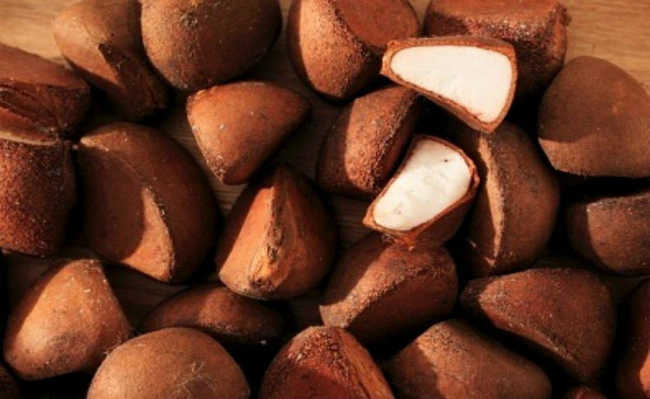Understand what phenolic resins are
Learn all about composition, applications and hazards associated with these substances and find out about alternatives

Phenolic resins are thermosetting or thermosetting polymers, produced through chemical condensation reactions between a phenol (aromatic alcohol derived from benzene), or a phenol derivative, and an aldehyde, especially formaldehyde (reactive gas derived from methanol) . These organic functions encompass a large number of different chemical compounds, and this fact makes possible the existence of a wide variety of phenolic resins available on the market.
Some phenol derivatives that can be used in this process are bisphenol-A, bisphenol-F and resorcinol, and among the aldehydes used are formaldehyde, acetaldehyde and propanal. For the production of commercial resins, the use of simpler compounds such as common phenol (hydroxybenzene) and formaldehyde normally predominates. Thus, phenolic resins are also called phenol-formaldehyde resins. However, depending on the specific properties of the resins to be obtained, such as reactivity and flexibility, it is possible to use other types of phenols and aldehydes.
The main characteristics of phenolic resins and the reasons why they are so in demand are: excellent thermal behavior, high level of strength and resistance, long thermal and mechanical stability, excellent ability to act as an electrical and thermal insulator (decomposition point of resins phenolics is in the temperature zone of 220°C and above).
During the synthesis of these resins, several factors are taken into account, such as the ratio of phenol to aldehyde in the mixture, the reaction temperature and the choice of catalyst. Thus, depending on the manufacturing process adopted, phenolic resins can be divided into two main classes, namely: novolac resins and resole resins.
Resole resins are obtained through the use of high temperatures, with the aid of alkaline catalysts and have a higher proportion of formaldehyde than phenol in the mixture, while novolac resins are synthesized in acidic media and with formaldehyde in a lower proportion of than phenol in its composition. In addition, while resins of the resole type are normally presented in a liquid state, those of the novolac type are presented in a solid state (obtained under the effect of temperature and pressure, molded and harden when they cool) enabling great utility and the application of phenolic resins in different sectors.
Origin and Discovery
Phenolic resins are of great importance, as they are considered the first thermoset polymer synthetically produced for commercial use.
The discovery and the first reports of products originating from the reaction between phenol and formaldehyde occurred in the late nineteenth century, but it was in 1907 that Leo Baekeland was able to develop a phenolic resin in a controlled process, called at first bakelite, creating thus its patent for phenolic resins, "Heat and Pressure", or in Portuguese “Calor e Pressure”. His patent related how to apply rapid cure to a molding composition in a specific shape, predetermined by the shape of a mold.
This event can be considered a milestone that preceded plastic manufacturing, and from Baekeland's pioneering efforts, phenolic resins are recognized as precursors to a large number of polymers. In the first decades of the 20th century, the manufacture of these resins revolutionized and propelled the plastic industry to be as we know it today. The first applications of these synthetic resins were aimed at the molded and laminated parts market for use in electrical equipment.
Until today, phenolic resins are of great importance and are used in various industrial applications and by different sectors, such as automotive, electrical, computer, aerospace and civil construction.
Where are they found?

For a little over a century, these resins have been used for different purposes and by multiple sectors and segments. They can be presented in liquid or solid form and have different uses, depending on their state and the parameters and materials adopted during their manufacture.
Throughout its historical application, phenolic resins have been widely used for the production of molded products (such as pool balls and laboratory benches for example), and as coatings and adhesives. In addition, these resins were once considered as the primary material used for the production of electrical circuit boards, as they are resistant to high temperatures and fire, but today they have largely been replaced by epoxy resins and fabric. fiberglass.
In addition to these applications, phenolic resins are also used as adhesives, adhesives in plywood and in agglomerated wood panels, as binders for fiberglass, mineral wool and other insulating products, to impregnate and laminate wood and plastic agents, in electrical laminates , in carbon foams, as molding compounds, as casting resins (heat and acid resistant coatings) and in fiber reinforced composites. They are also used in paints and varnishes.
A common reason for using plywood with phenolic resins instead of plain wood is its resistance to cracking, shrinkage, twisting, fire and its high level of strength. Therefore, such materials replace many other types of wood in applications in the civil construction sector. Not to mention that laminates produced based on this resin are made by impregnating one or more layers of a base material, such as paper, fiberglass or wood, with phenolic resin under heat and pressure.
Examples of products based on phenolic resins are: pool balls (based on solid phenol-formaldehyde resin) and required brake pads and clutch discs (automobile industry).
Phenolic resins remain very important industrial polymers, although their most common use today is as adhesives for bonding plywood and other structural wood products.
Risks to human health
Although still produced on a large scale, phenolic resins are proven to be dangerous to human health and the risks offered by them are directly related to the type of compound used in their synthesis. It is necessary to know the material chosen for its production, both the phenol or derivative, and the aldehyde used, in order to know for sure the possible dangers and look for more adequate and safer alternatives.
As stated above, different types of phenols and aldehydes can be used in the manufacturing process of phenolic resins. They are mainly phenol, bisphenol-A, bisphenol-F and formaldehyde.
In the case of bisphenol-A and bisphenol-F, which may be used in the synthesis of these resins, studies have shown that these substances are cumulative in the body and function as endocrine disruptors, with estrogenic and androgenic effects, negative effects on the thyroid and increased of the uterus and the weight of testicles and glands (read more in "Learn about types of bisphenol and their risks"). Furthermore, phenol in its simple form has been found to be toxic and cause irritation to the human respiratory system, in addition to other complications.
Another substance often used to manufacture phenolic resins and found to be a hazard is formaldehyde (read more about it in "Learn about the hazards of formaldehyde and how to avoid them"). Formaldehyde is highly volatile, belonging to the harmful group of volatile organic compounds, also known as VOCs (see more about VOCs in the article "VOCs: know what volatile organic compounds are, their risks and how to avoid them").
Furthermore, according to studies presented by the International Agency for Research on Cancer (IARC), formaldehyde is considered carcinogenic to humans and may also act as an endocrine disruptor.
Thus, with the extensive use and possible depletion of fossil raw materials (the basis for the production of most of these resins), added to increasingly strict regulations in the area of human health and the environment, the search for alternative substances for the formaldehyde becomes a major concern of the phenolic resin industry.
Reprocessing of objects containing these resins
Already banned or controlled in several countries, but not yet in Brazil, the production of phenolic resins, as we know it today, has its days numbered. In this case, in addition to the toxicity of the product, the unsustainability of production must also be considered, since it is dependent on oil, a non-renewable source.
As it is a thermoset polymer, disposal and reprocessing of products containing this type of resin are difficult, as they present crosslinks in their structure, and when they are reheated, these bonds break, inducing material degradation, and dispersing substances harmful.
This does not mean that it is impossible to reuse thermosets. They can be added in small quantities as fillers and reinforcements, including in thermoplastic and thermoset materials.
One reprocessing technique used consists of 'breaking' the thermoset material into small pieces and mixing these pieces into the virgin material, causing them to remain contained within. The use of recycled phenolic resins makes the curing process (under high temperatures) faster and therefore cheaper, and enables the creation of a very shiny surface. In addition, it has been reported that the use of recycled thermoset materials, such as filler, provides a perfect adhesion range for the virgin material.
Alternatives
Growing concerns about environmental challenges, energy security and sustainability, together with the desire to reduce dependence on crude oil, have intensified global efforts to produce bioproducts from renewable sources. The production of chemical and biological materials to replace petroleum-based products is essential in a society that dreams of true sustainable development without makeup.
In this context, it is essential to develop polymers and resins based on natural sources. For example, petroleum-based phenol could be replaced by biophenols and carcinogenic formaldehyde could be replaced by furfural or hydroxymethyl furfural, sugar-based substances. The development of biobased resins would then lead to the production of truly sustainable resins.
Thus (as can be seen in more detail in the article: USP researchers investigate the potential use of agro-industrial residues), alternatives have been sought to meet this need for making a sustainable resin at a commercial level. And, in a country like Brazil, which has most of its territory located in an area with a tropical climate, agriculture symbolizes one of the main engines of the economy. It is possible to find raw materials, seen until then as agricultural waste, to be useful in the attempt to solve this problem, such as sugarcane (bagasse and fibers).
Sources: Phenolic formaldehyde resins, Phenolic resins: a century of history, Phenolic resins: 100 years of history and still growing, and Phenolic resins based on natural sources










